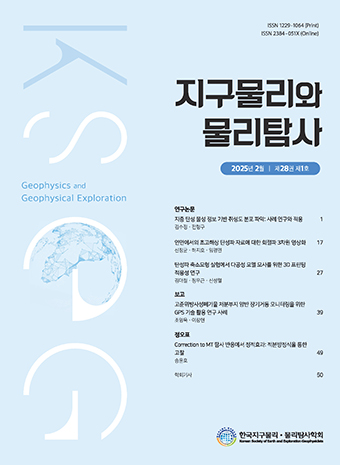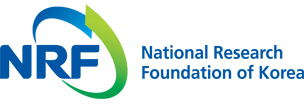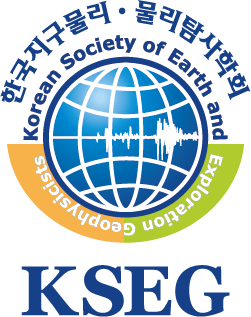Research Article
Anjom, F. K., Vaccarino, F., and Socco, L. V., 2020, Machine learning for seismic exploration: Where are we and how far are we from the holy grail?, The Leading Edge, 39(10), 726-733. https://doi.org/10.1190/geo2023-0129.1
10.1190/geo2023-0129.1Araya-Polo, M., Dahlke, T., Frogner, C., Zhang, C., Poggio, T., and Hohl, D., 2017, Automated fault detection without seismic processing, The Leading Edge, 36, 208-214. https://doi.org/10.1190/tle36030208.1
10.1190/tle36030208.1Cova, D., Xie, P., and Trinh, P. T., 2020, Automated first break picking with constrained pooling networks, 90th Annual International Meeting, SEG, Expanded Abstracts, 1481-1485. https://doi.org/10.1190/segam2020-3427812.1
10.1190/segam2020-3427812.1Devlin, J., Chang, M. W., Lee, K., and Toutanova, K., 2019, BERT: Pre-training of deep bidirectional transformers for language understanding, NAACL-HLT. https://doi.org/10.18653/v1/N19-1423
10.18653/v1/N19-1423Graves, R. W., 1996, Simulating seismic wave propagation in 3-D elastic media using staggered-grid finite differences, Bulletin of the Seismological Society of America, 86(4), 1091-1106. https://doi.org/10.1785/BSSA0860041091
10.1785/BSSA0860041091Harsuko, R. and Alkhalifah, T. A., 2022, StorSeismic: A new paradigm in deep learning for seismic processing, IEEE Transactions on Geoscience and Remote Sensing, 60, 1-15. https://doi.org/10.1109/TGRS.2022.3216660
10.1109/TGRS.2022.3216660Hegna, S., Klüver, T., Lima, J., and Wisloff, J., 2019, Making the transition from discrete shot records to continuous seismic records and source wavefields, and its potential impact on survey efficiency and environmental footprint, Geophysical Prospecting, 67(6), 1472-1485. https:// doi.org/10.1111/1365-2478.12705
10.1111/1365-2478.12705Helbig, K. and Thomsen, L., 2005, 75-plus years of anisotropy in exploration and reservoir seismics: a historical review of concepts and methods, Geophysics, 70, 9ND-23ND. https://doi.org/10.1190/1.2122407
10.1190/1.2122407Kazei, V., Ovcharenko, O., and Alkhalifah, T., 2020, Velocity model building by deep learning: From general synthetics to field data application, 90th Annual International Meeting, SEG, Expanded Abstracts, 1561-1565. https://doi.org/10.1190/segam2020-3428324.1
10.1190/segam2020-3428324.1Komatitsch, D. and Martin, R., 2007, An unsplit convolutional perfectly matched layer improved at grazing incidence for the seismic wave equation, Geophysics, 72(5), SM155-SM167. https://doi.org/10.1190/1.2757586
10.1190/1.2757586Raissi, M., Perdikaris, P., and Karniadakis, G. E., 2019, Physics-informed neural networks: A deep learning framework for solving forward and inverse problems involving nonlinear partial differential equations, Journal of Computational Physics, 378, 686-707. https://doi.org/10. 1016/j.jcp.2018.10.045
10.1016/j.jcp.2018.10.045Vaswani, A., Shazeer, N., Parmar, N., Uszkoreit, J., Jones, L., Gomez, A. N., Kaiser, Ł., and Polosukhin, I., 2017, Attention is all you need, Advances in Neural Information Processing Systems, 30. https://doi.org/10.48550/arXiv.1706.03762
Wang, E. and Nealon, J., 2019, Applying machine learning to 3D seismic image denoising and enhancement, Interpretation, 7(3), SE131-SE139. https://doi.org/10.1190/INT-2018-0224.1
10.1190/INT-2018-0224.1Wu, H., Zhang, B., Li, F., and Liu, N., 2019a, Semiautomatic first-arrival picking of microseismic events by using the pixel-wise convolutional image segmentation method, Geophysics, 84(3), V143-V155. https://doi.org/10.1190/geo2018-0389.1
10.1190/geo2018-0389.1Wu, H., Zhang, B., Lin, T., Li, F., and Liu, N., 2019b, White noise attenuation of seismic trace by integrating variational mode decomposition with convolutional neural network, Geophysics, 84(5), V307-V317. https://doi.org/10.1190/geo2018-0635.1
10.1190/geo2018-0635.1Xu, Y., Li, J., and Chen, X., 2019, Physics informed neural networks for velocity inversion, 89th Annual International Meeting, SEG, Expanded Abstracts, 2584-2588. https://doi.org/10.1190/segam2019-3216823.1
10.1190/segam2019-3216823.1Yang, F. and Ma, J., 2019, Deep-learning inversion: A next-generation seismic velocity model building method, Geophysics, 84(4), R583-R599. https://doi.org/10.1190/geo2018-0249.1
10.1190/geo2018-0249.1Yilmaz, Ö., 2001, Seismic Data Analysis: Processing, Inversion, and Interpretation of Seismic Data, Society of Exploration Geophysicists. https:// doi.org/10.1190/1.9781560801580
10.1190/1.9781560801580Yu, S., Ma, J., and Wang, W., 2019, Deep learning for denoising, Geophysics, 84(6), V333-V350. https://doi.org/10.1190/geo2018-0668.1
10.1190/geo2018-0668.1- Publisher :Korean Society of Earth and Exploration Geophysicists
- Publisher(Ko) :한국지구물리물리탐사학회
- Journal Title :Geophysics and Geophysical Exploration
- Journal Title(Ko) :지구물리와 물리탐사
- Volume : 27
- No :3
- Pages :171-180
- Received Date : 2024-07-19
- Revised Date : 2024-08-13
- Accepted Date : 2024-08-19
- DOI :https://doi.org/10.7582/GGE.2024.27.3.171




 Geophysics and Geophysical Exploration
Geophysics and Geophysical Exploration







